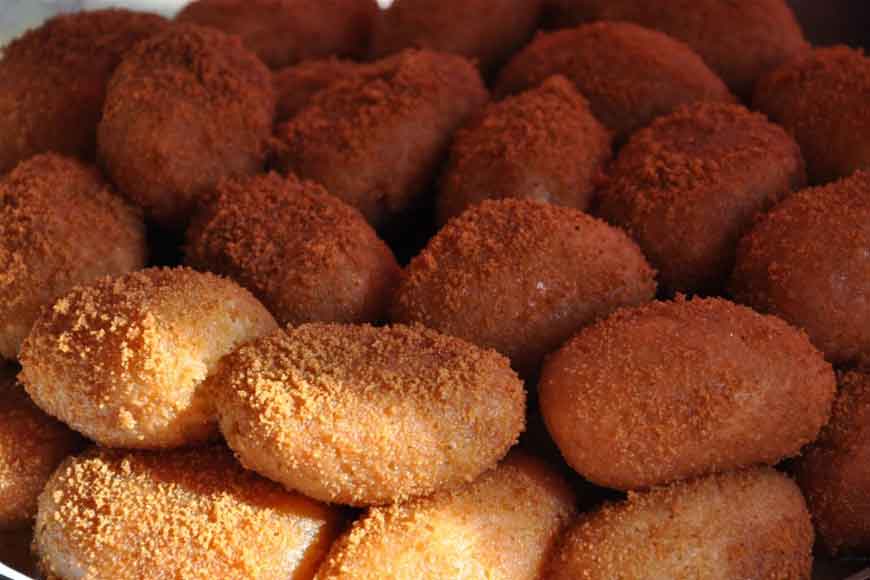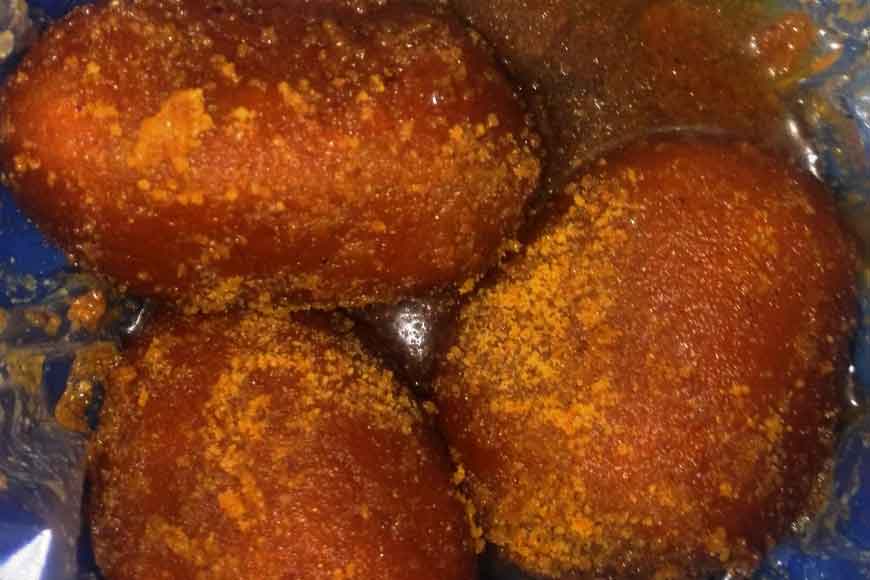Tracing the history of Bengal’s famous sweet Chom Chom!

Porabari is a hamlet in the Tangail district of Bangladesh, on the banks of the Dhaleshwari River. It was a prosperous business centre, since the era of the British Raj. This place is famous not only as a business centre but also being the birthplace of the famous Chom chom. Porabarir Chom chom is famous for its burnt brick colour and for its juicy interior, that tastes like honey. It is said the typical burnt brick colour came from caramelized sugar. Even Tangail, the place known for its Tangail sarees, got a share in the pie for Porabari’s Chom chom fame.
Legends say, the village was named Porabari, because the house of a sweet maker was burnt down while making these sweets. As pora in Bengali means burnt and bari stands for house, it is all but quite natural that the birthplace of Chom chom came to be known as Porabari. There was once a ghat at Porabari on the banks of Dhaleshari River. Steamers, launches and big cargo ships anchored there. Men of different position and taste used to come to Porabari. Once, Porabari was a thriving business centre where rich people lived. The fame of the Porabari Chom chom is not a matter of recent years. It has been reigning for more than one and half century.

There is little evidence like makers of rosogolla, to prove who from Porabari first started making Chom chom. However, villagers claim a sweet maker called Dasharath first made this sweet in his village. The Ghosh and Pal communities of the village are still involved in sweet making. It is also believed the taste and flavour of the Porabari Chom chom came from the sweet waters of the Dhaleshwari River. The sweet of Tangail has a secret recipe. This is whyothers failed to make sweets as fine as that of Porabari.
At present, Chom chom is a very popular sweet in both Bangladesh and West Bengal. The shape of the sweet is generally oval and other than the brownish tinge, Chom chom is made in a variety of colours such as light pink, light yellow and white. It is at times coated with coconut or mawa flakes as garnish. Some sweet-makers of Tangail still hold on to their Chom chom recipes. The sons and grandsons of Khuka Ghosh of Pach-Ali bazaar are always ready with fresh and pure Chom chom. West Bengal’s sweetmakers have also derived their inspiration from the Ghosh and Pals, some of whom are their forefathers.









